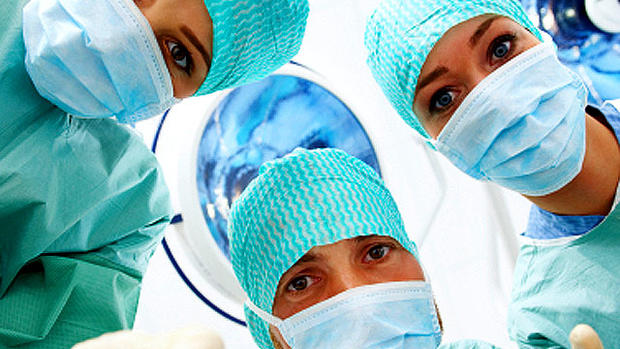Mammograms for younger women may prevent breast cancer deaths
Most breast cancer deaths happen to younger women who did not get regular mammogram screenings, new research shows. The findings are a departure from screening guidelines that urge routine mammograms only in older women.
"The biological nature of breast cancer in young women is more aggressive, while breast cancer in older women tends to be more indolent. This suggests that less frequent screening in older women, but more frequent screening in younger women, may be more biologically based, practical, and cost effective," study author Dr. Blake Cady, professor of Surgery at Harvard Medical School in Boston, said in a press release.
There will be 234,580 people diagnosed with breast cancer in the U.S. during 2013, according to National Cancer Institute estimates. A little over 40,000 people will die from the disease this year.
The United States Preventative Services Task Force recommended in 2009 that routine breast cancer screening with mammograms only be given to women between the ages of 50 and 74. Other studies have shown that up to one-third of breast cancers -- about 50,000 to 70,000 cases -- may not need treatment, and more mammogram screenings may lead to more false positive results and unnecessary treatments. Overall, more than 1 million women may have been treated for cancers that otherwise would have not affected their lives.
The American Cancer Society recommends an earlier age for screening, saying women should get a yearly mammogram starting at age 40, continuing as long as they are healthy.
The Centers for Disease Control and Prevention (CDC) recommends routine breast cancer screening for older women , urging mammograms every two years for those between 50 and 74. For those who are younger but have a familial history of the disease or any suspicious symptoms, the CDC advises to talk to their doctors to see if they need routine mammograms.
A study published earlier this year in JAMA Internal Medicine showed that women between those ages who got screenings every two years were at no higher risk for advanced-stage breast cancer and were at a lower risk for false positives compared to those who got tested every year.
To see if the studies and guidelines were sound, Cady and colleagues conducted a "failure analysis" of mammogram screening, which meant they looked at death rates in order to derive any connections to breast cancer diagnoses. Subjects in the study were diagnosed with breast cancer at Partners HealthCare hospitals in Boston between 1990 and 1999, and the researchers followed their cases through 2007.
They found 609 confirmed breast cancer deaths. The median age of death from breast cancer was 49, and the median age of death from any other cause was 72.
Twenty-nine percent of the deceased had been screened with mammograms, while 71 percent had not gone through screening.
In addition, only 13 percent of the deaths occurred in women who were 70 or older, and 50 percent were in women younger than 50 years old.
The researchers behind the study, which was published in the American Cancer Society's journal, CANCER on Sept. 9, encouraged more regular screening before the age of 50 to help prevent some of these deaths. Study co-author Dr. Daniel Kopans, a radiologist at Harvard Medical School and Massachusetts General Hospital, said in a press release that previous research that downplayed the importance of mammograms was misleading because it didn't look at individual women, instead relying on registry data.
A previous study in 2011 published in Radiology also showed that women between 40 and 74 who were invited to routine mammogram screenings every 24 to 33 months had a 30 percent lower breast cancer death rate compared to those who received "usual care" and no reminders.
There were some positive findings: Breast cancer survival rates in the study were much higher than previously noted. In 1969, about 50 percent of women who had breast cancer died within 12.5 years of diagnosis. The rate of death for women who were diagnosed during the study period was only 9.3 percent.
"This is a remarkable achievement, and the fact that 71 percent of the women who died were women who were not participating in screening clearly supports the importance of early detection," Kopans said.
Dr. Barbara Monsees, chairwoman of the American College of Radiology Breast Imaging Commission, added to HealthDay that the lower rates of death should be attributed not only to better treatment methods, but to earlier detection and better screening. She added that while screening might not prevent you from getting the disease, it may lower your chance of dying from it.
"(The study) presents a very compelling argument in favor of screening beginning at age 40 on an annual basis," Monsees, who was not involved in the study, said. "It corroborates what we have known for a long time."

